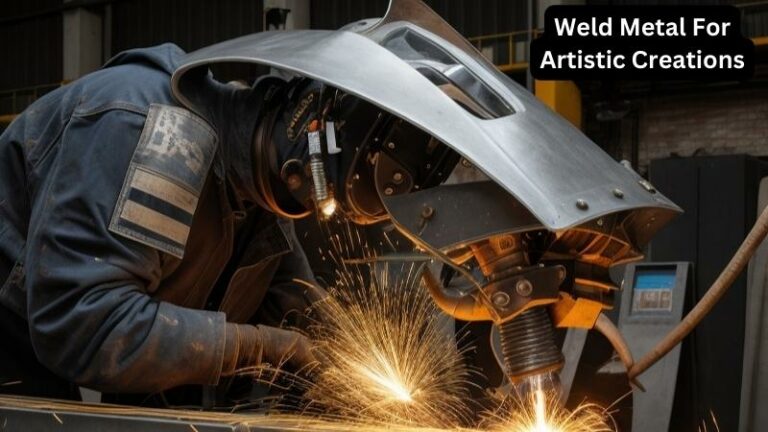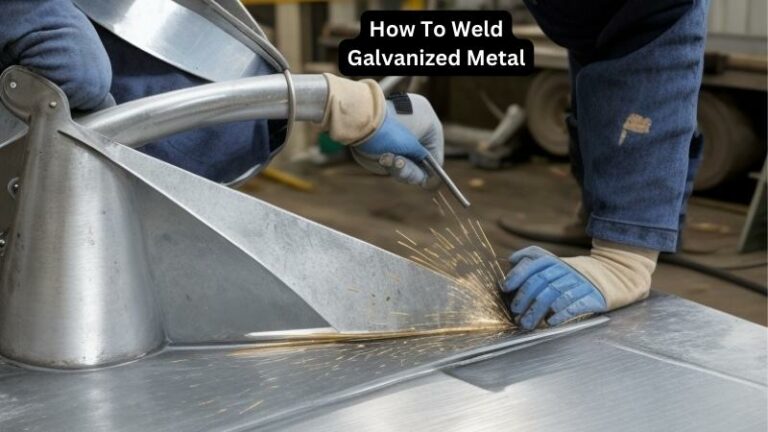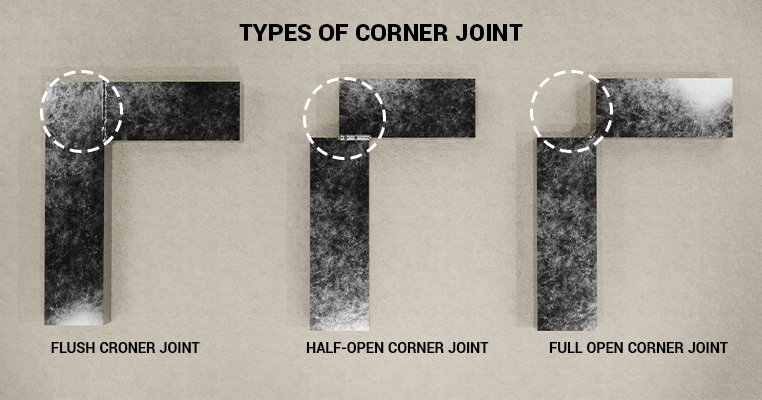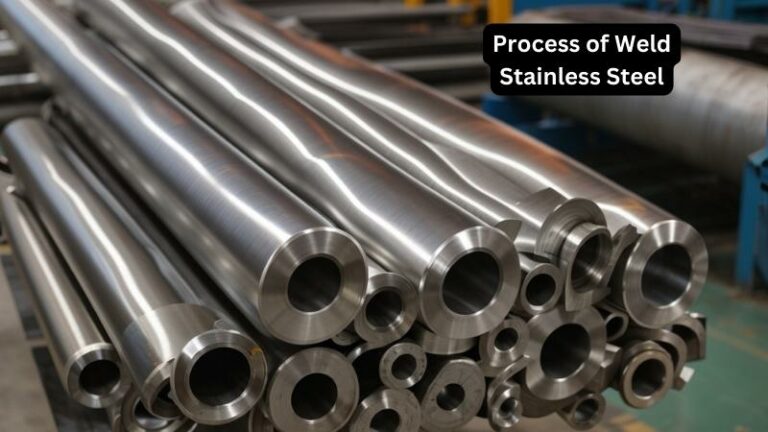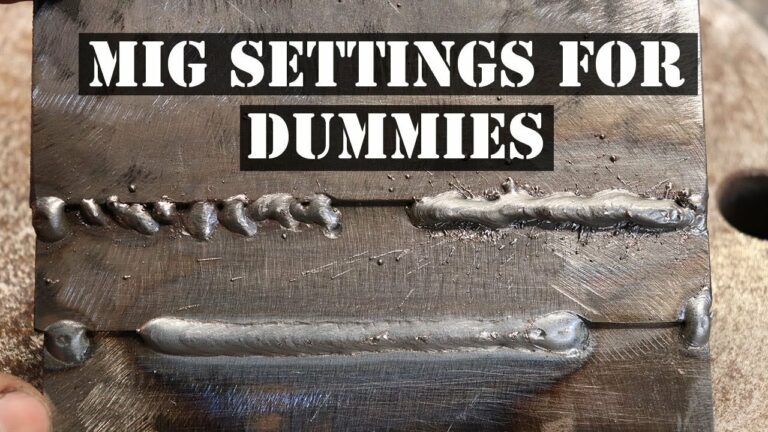How To Remove Welding Spatter
Hey there! Looking to find out How To Remove Welding Spatter? Well, you’ve come to the right place! Welding spatter can be a pesky problem but don’t worry, we’ve got you covered with some effective solutions. So let’s dive right in!
Have you ever finished a welding project only to find unsightly spatter all over your workpiece? It can be frustrating, I know. But fear not! In this guide, I’m going to show you a few simple and easy methods to remove welding spatter and get your work looking clean and professional in no time.
Whether you’re an experienced welder or just starting out, dealing with welding spatter is something that comes up. But don’t worry, removing spatter doesn’t have to be a daunting task. With the right techniques and a little bit of elbow grease, you’ll be able to achieve those smooth and flawless welds you’ve always wanted. So let’s get to it and banish that spatter for good!
Removing Welding Spatter: A Step-by-Step Guide
- Clean the metal surface with a wire brush to remove loose spatter.
- Apply a spatter release agent to prevent future spatter buildup.
- Use a chisel or scraper to remove stubborn spatter carefully.
- If spatter remains, use a grinding wheel or sander to remove it.
- Finish by cleaning the area with a degreaser and a clean cloth.
How to Remove Welding Spatter: A Comprehensive Guide
Welding spatter can be a frustrating byproduct of the welding process. It refers to the small droplets of molten metal that get scattered around the weld area, resulting in a rough and unattractive finish.
Removing welding spatter is crucial not only for aesthetic reasons but also for ensuring the quality and strength of the weld. In this comprehensive guide, we will explore various effective methods and techniques to remove welding spatter, allowing you to achieve smooth and professional-looking welds.
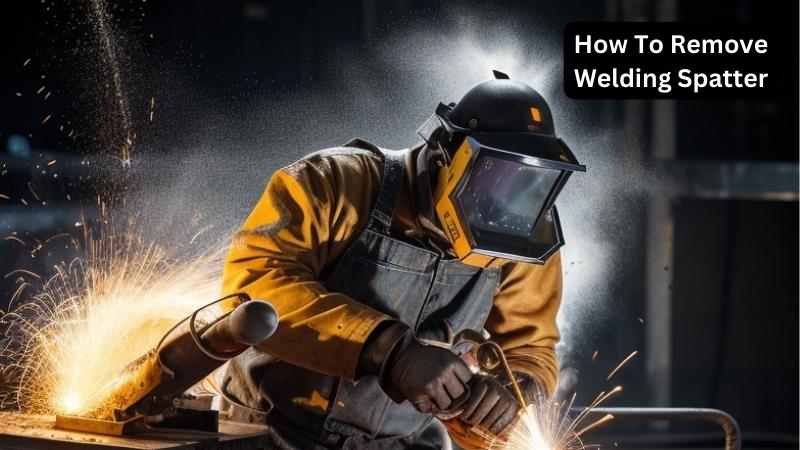
The Importance of Removing Welding Spatter:
Welding spatter not only diminishes the appearance of a weld but can also have adverse effects on its integrity. When spatter is left on the surface, it can interfere with the adhesion and penetration of subsequent layers, compromising the strength and durability of the weld joint. Additionally, spatter can be a safety hazard, as it can cause eye injuries, burns, and damage to nearby equipment or surfaces. By learning how to effectively remove welding spatter, you can ensure the quality, safety, and aesthetics of your welds.
1. Proper Welding Technique:
One of the key factors in minimizing welding spatter is using the right welding technique. By mastering the proper technique, you can significantly reduce the amount of spatter produced. Here are a few tips to help you achieve cleaner welds:
- Maintain the correct arc length: Keep the distance between the electrode and the workpiece consistent to prevent excessive spatter.
- Use the appropriate polarity: Using the correct polarity for your welding process can help reduce spatter. For example, switching to reverse polarity (DC electrode negative) in MIG welding can minimize spatter.
- Ensure adequate shielding gas coverage: Proper gas flow and nozzle angle are essential to provide sufficient shielding, minimizing spatter formation.
By implementing these techniques, you can reduce the amount of spatter generated and make the subsequent spatter removal process much easier.
2. Mechanical Methods:
When it comes to removing welding spatter, mechanical methods involve physically removing the spatter from the surface of the weld. Here are a few effective mechanical methods:
Wire Brushing
Wire brushing is one of the most common and effective methods for removing welding spatter. Using a wire brush with stiff bristles, you can scrape off the spatter from the surface of the weld.
It is important to use a brush with bristles made from a material compatible with the base metal to avoid causing scratches or damage to the weld. Wire brushing is suitable for both small spatter particles and larger spatter formations.
Grinding
Grinding can be used to remove stubborn or excessive spatter that cannot be easily removed with wire brushing. Using a grinding wheel or an angle grinder with a suitable grinding disc, you can carefully grind away the spatter, smoothing the surface of the weld. It is important to exercise caution and control while grinding to ensure you do not remove excessive material or damage the weld joint.
Chemical Solvents
In some cases, chemical solvents can be used to dissolve and remove welding spatter. Solvents specifically formulated for metal cleaning, such as pickling solutions or spatter remover sprays, can be applied to the spatter with a brush or cloth.
These solvents work by breaking down the spatter, allowing it to be wiped away easily. However, it is important to follow the manufacturer’s instructions and ensure proper ventilation when working with chemical solvents.
3. Preventive Measures
While knowing how to remove welding spatter is essential, taking preventive measures to minimize spatter formation in the first place can save you time and effort. Here are some effective preventive measures:
Selection of Electrode and Shielding Gas
Choosing the appropriate electrode and shielding gas for your welding process can have a significant impact on spatter formation. For instance, using low-spatter electrodes specifically designed for low-spatter applications can help minimize spatter. Similarly, using the right shielding gas composition and flow rate can improve the overall welding process and reduce spatter formation.
Surface Preparation
Proper surface preparation plays a crucial role in minimizing spatter. Ensure that the welding area is clean and free from any contaminants such as rust, oil, or paint. Cleaning the surface before welding ensures better adherence and reduces the chances of spatter formation.
Optimization of Welding Parameters
Adjusting the welding parameters such as voltage, current, and travel speed can help reduce spatter formation. It is essential to find the optimal settings for your specific welding process and material thickness. Experimenting with different parameters and monitoring the spatter levels can lead to finding the best combination for minimal spatter formation.
Additional Tips and Tricks:
Now that you know how to remove welding spatter effectively and take preventive measures, here are some additional tips and tricks to ensure the best results:
1. Personal Protective Equipment (PPE)
Always wear appropriate personal protective equipment (PPE) when welding or removing spatter. This includes safety glasses, gloves, a welding helmet or face shield, and suitable clothing to protect against sparks and molten metal.
2. Regular Equipment Maintenance
Maintaining your welding equipment regularly can help prevent spatter buildup. Clean and replace worn or damaged welding nozzles, contact tips, and drive rolls to ensure optimal performance and minimize spatter formation.
3. Welding Technique Practice
Practice your welding technique regularly to improve your skills and minimize spatter formation. Consider taking welding classes or joining a welding community to learn from experienced welders and exchange tips on achieving cleaner welds.
By implementing these tips and techniques, you can effectively remove welding spatter and achieve clean, professional welds. Remember to prioritize safety and always follow proper welding practices to ensure both quality and aesthetics in your welding projects.
Key Takeaways: How To Remove Welding Spatter
Removing welding spatter can be a breeze if you follow these tips:
- Wipe the spatter away gently using a wire brush or abrasive pad.
- Apply a spatter release agent before welding to prevent the spatter from sticking.
- Use a chipping hammer to chip away larger pieces of spatter.
- For stubborn spatter, use a chemical spatter remover.
- Regularly clean and maintain your welding equipment to prevent spatter buildup.
Faqs for How To Remove Welding Spatter:
Welding spatter refers to the small bits of molten metal that can fly off during the welding process. These specks of metal can land on other parts of your workpiece, causing a range of issues. Not only can they ruin the appearance of your weld, but they can also interfere with the integrity of the joint. This can compromise the strength and durability of your welding project.
Additionally, if untreated, welding spatter can accumulate on welding equipment and surfaces, leading to more frequent maintenance and decreasing the lifespan of your tools. Therefore, it’s important to address welding spatter to ensure high-quality welds and prolong the longevity of your equipment.
While it’s challenging to entirely eliminate welding spatter, there are steps you can take to minimize it. Using the appropriate welding parameters, such as adjusting voltage, amperage, and wire feed speed, can help reduce the amount of spatter. It’s also crucial to ensure that you have proper shielding gas coverage and the correct contact tip-to-work distance.
Furthermore, using anti-spatter products, like spatter-release sprays or gels, can create a protective coating on your workpiece, making it easier to remove spatter after welding. Regularly cleaning and maintaining your welding equipment, such as replacing worn or damaged consumables, can also contribute to reducing spatter.
There are various techniques you can employ to remove welding spatter. One common method is using mechanical means, such as chipping or scraping spatter off the workpiece surface using a wire brush or chisel.
However, be cautious not to damage the underlying metal or the weld itself while doing so.
Chemical solutions can also be used to remove welding spatter.
These solutions, often referred to as weld spatter removers or anti-spatter sprays, effectively dissolve and remove spatter when applied to the affected areas. Be sure to follow the manufacturer’s instructions when using these products.
Absolutely! When removing welding spatter, safety should always be a priority. Wear appropriate personal protective equipment (PPE) such as safety glasses, gloves, and a welding apron to protect yourself from sparks, hot metals, and chemicals. Ensure good ventilation in your workspace to prevent inhalation of any fumes.
Additionally, be cautious when using mechanical tools to remove spatter to avoid injury. Use proper lifting techniques and ensure a stable working environment to prevent accidents. Always follow safety guidelines provided by the manufacturer of the products you’re using and consult with a professional if needed.
To maintain a spatter-free welding environment, there are a few practices you can adopt. Firstly, regularly inspect and clean your welding equipment to prevent the buildup of spatter. Keep your contact tips clean and in good condition.
Additionally, ensure that you have the right settings for your welding process and use the appropriate welding techniques for the materials you’re working with.
Properly prepare your workpieces before welding, ensuring they are clean and free from contaminants that could increase spatter.
Lastly, invest in high-quality welding tools and consumables for better performance and less spatter.
Slide Hammer Tool for Removing Weld Spatter
Summary:
Removing welding spatter can be easy. First, you’ll need the right tools, like a wire brush or chisel. Then, you can use techniques like grinding or scraping to get rid of the spatter. Remember to wear safety gear and protect your skin. Finally, clean the area thoroughly to prevent further damage. With these steps, you’ll have smooth, clean welds in no time!
In addition, prevention is key. By using anti-spatter products or applying a layer of welding spray before starting, you can minimize spatter. Regularly cleaning and maintaining your welding equipment will also help prevent spatter buildup. So, whether you’re removing existing spatter or preventing it in the future, these tips will make your welding projects go smoothly.
